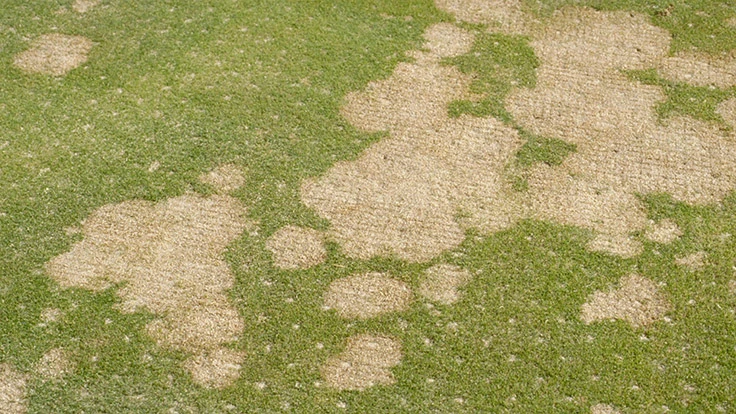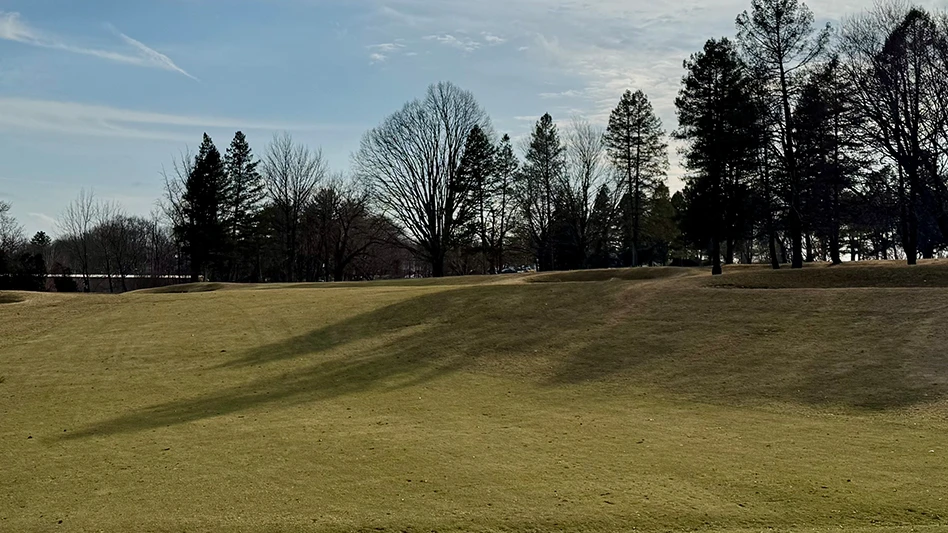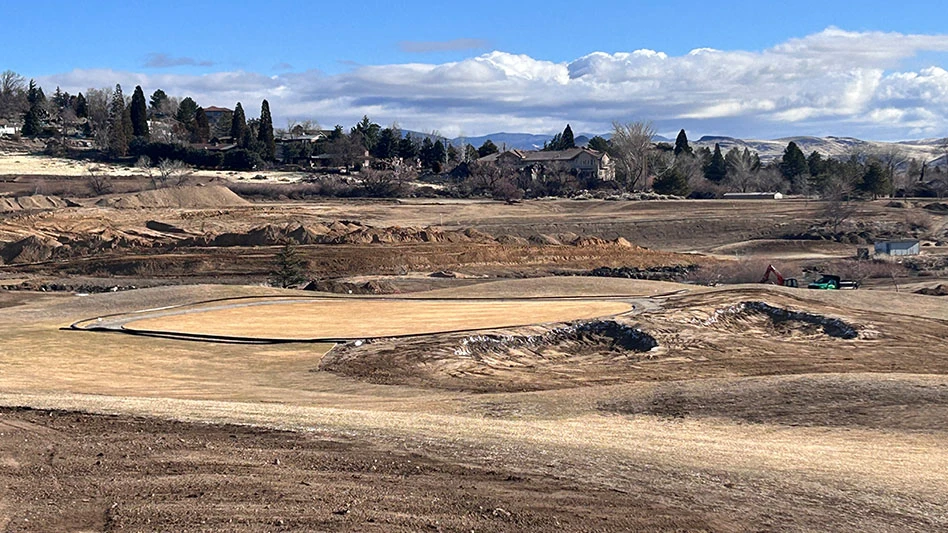
 |
Healthy Turf Tips: Snow Mold – Sponsored by Bayer
Dr. Paul Koch is an assistant professor, Department at Plant Pathology, at the University of Wisconsin-Madison. GCI chatted with Koch about the importance of properly timing snow mold applications.
What type of problems did we see with snow mold this year and what lessons can be learned from some of the damage we saw?
As far as the problems, we didn’t see anything necessarily different than most years. It was either one of two things in the places we saw it break through. Applications weren’t put down at the proper time. They might have been put down too early or the mixture just wasn’t real strong. People might have had budget cuts at a facility, they try to go out with a cheaper mixture, they might only put out one active ingredient or two active ingredients … and if you have heavy pressure, what we have found over the past several years, you really need a mixture of at least three different active ingredients in there to provide proper control. Other things that we saw, not necessarily last year, but two years ago, especially in Canada, people putting out effective products, but there was some sort of weather event after the application that made it less effective. It could have been a big rainfall event or a very warm spell that allowed for some growth and led to some of the breakdowns of the products.
When should superintendents start thinking about their first snow mold application?
It depends on your area of the country. A lot of people start thinking about it in our neck of the woods in the beginning of August because of early order programs. They aren’t putting out products for snow mold, but they are thinking about what products they are going to get. We will be making our first trip for snow mold trials in a few weeks. We will be going to the Upper Peninsula to put out some products up there. There are two lines of thinking. One is that you want to get your products out early so that anything that is systemic can be taken out of the plant and to provide protection throughout the plant. The other line of thinking is that you want to get your products out as late as absolutely possible so that there is less chance of some sort of environmental breakdown before the snow cover ever acts. We actually have a GCSAA study starting up looking at optimal timing so hopefully in a few years we will have a better idea when the optimal timing is. Typically, I think somewhere between two to three weeks of your traditional snow cover is when I think you should plan to make an application and adjust based on weather at that point in time. Other people like to go out with earlier applications and combine it with what they call a ‘fall cleanup.’ They are cleaning up some residual dollar spot activity or cleaning up some sort of leaf spot activity, and you are also getting an early shot on your snow mold applications. And we have seen those be somewhat effective. If you are out in our neck of woods, four to six weeks before your normal snow cover will be somewhere in mid-October and early November, you don’t get great control but you do reduce the pressure, you do reduce the amount of the disease you will have the next year. So there’s an effect of those early applications. The thinking is similar to early season dollar spot applications. You’re knocking down the inoculum which is lessening the disease later on.
How important is it for superintendents to understand the climate data for their area when determining the timing of snow mold applications?
That’s critical to have an idea when things will happen especially if you are in areas where you can get a quick snow cover that will last. Typically in our area, southern Wisconsin, Chicago, lower Midwest, if you get an early snow cover, chances are it’s going to melt and you’re going to be able to get something out before too long. If you are in the northern Midwest, if you are in the Rocky Mountain west, northern New England, you might get a quick shot of lake effect snow out of nowhere and you will be buried. It’s better to be a little too early then a day too late. It’s critical to know when those things typically happen and it’s critical to be ready. We had a course in the UP last year that for whatever reason, they didn’t have their products and they weren’t ready to go, and there was an early snowfall and snow didn’t melt the whole year and they had devastating damage the following spring. You have to have your products on site several weeks in an advance of when you typically might apply just in case you do get an early snowfall.
What are some trends in snow mold control?
Dyes. I have been here doing testing at Wisconsin in various roles. I was a staff member and now I’m on the faculty for almost 10 years now. The pigments are the biggest change. When we started testing out these products, there was basically no pigments. Now you are seeing every treatment have almost some sort of pigment in there. The thinking is if you can have that turf be a little greener coming out of the spring, there’s obviously some visual benefits and there is some research to support those plants are actually going to support their growth a little bit earlier if you don’t have the pigment in there. That data is not real strong one way or the other right now, but certainly the inclusion of pigments has been the one biggest change in the last 10 years or so.”
Get curated news on YOUR industry.
Enter your email to receive our newsletters.Latest from Golf Course Industry
- Atlanta Athletic Club approves funding for master plan
- PBI-Gordon introduces new field development team
- The Cabot Collection announces move into course management
- Carolinas GCSA raises nearly $300,000 for research
- Advanced Turf Solutions’ Scott Lund expands role
- South Carolina’s Tidewater Golf Club completes renovation project
- SePRO to host webinar on plant growth regulators
- Turfco introduces riding applicator





